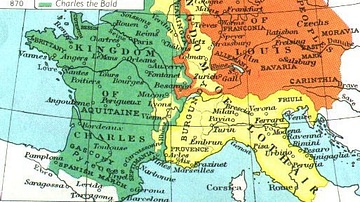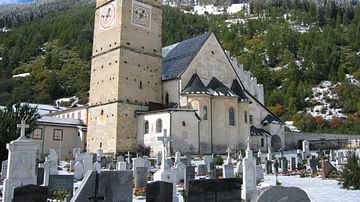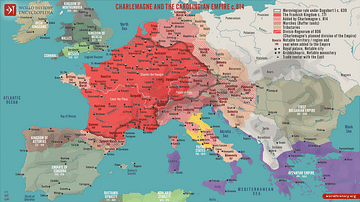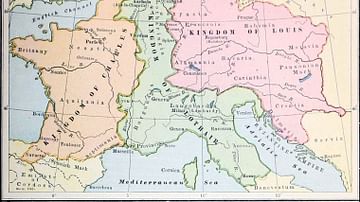Search
Remove Ads
Advertisement
Summary 
Loading AI-generated summary based on World History Encyclopedia articles ...
Search Results

Definition
Carolingian Dynasty
The Carolingian Dynasty (751-887) was a family of Frankish nobles who ruled Francia and its successor kingdoms in Western and Central Europe during the Early Middle Ages. The dynasty expanded from Francia as far as modern Italy, Spain, and...

Definition
Franks
The Franks were a Germanic people who originated along the lower Rhine River. They moved into Gaul during the Migration Age, where they established one of the largest and most powerful kingdoms in Europe after the fall of the Western Roman...

Definition
Kingdom of West Francia
The Kingdom of West Francia (843-987 CE, also known as The Kingdom of the West Franks) was the region of Western Europe that formed the western part of the Carolingian Empire of Charlemagne (Holy Roman Emperor 800-814 CE) known as Francia...

Image
Division of the Carolingian Empire in 843 & 870 CE
Map of the Carolingian empire following its division in the 9th Century CE. The Treaty of Verdun in 843 CE partitioned the Kingdom of the Franks into West Francia (green), East Francia (orange), and Middle Francia (yellow) and allocated them...

Definition
Merovingian Dynasty
The Merovingian Dynasty was the ruling family of the Franks from roughly 481 when Clovis I ascended the throne of the Salian Franks until 751 when Childeric III was deposed and the Merovingians were supplanted by the Carolingian Dynasty as...

Definition
Abbey of Saint John at Müstair
The Abbey of Saint John at Müstair, located in the village of Müstair in Canton Graubünden, Switzerland, is an early medieval Benedictine monastery dating to the late 8th century CE that became an abbey in 1163 CE. It is renowned across Europe...

Definition
Tang Dynasty
The Tang Dynasty (618-907 CE) was one of the greatest in Imperial Chinese history. It was a golden age of reform and cultural advancement which lay the foundation for policies which are still observed in China today. The second emperor, Taizong...

Image
Charlemagne and the Carolingian Empire c. 814
A map illustrating the rise and expansion by conquest of the Frankish Carolingian ("descendants of Charles") dynasty during the rule of the son of Peppin the Short and grandson of Charles Martel, Charlemagne (768 - 814 CE). Under Charlemagne...

Image
Division of the Carolingian Empire
Map of the Carolingian Empire following its division in 843 by the Treaty of Verdun. At the death of Emperor Louis the Pious (r. 813-840), the Kingdom of the Franks was partitioned and allocated to three of his four sons. West Francia (orange...

Definition
Han Dynasty
The Han Dynasty (202 BCE - 220 CE) was the second dynasty of Imperial China (the era of centralized, dynastic government, 221 BCE - 1912 CE) which established the paradigm for all succeeding dynasties up through 1912 CE. It succeeded the...